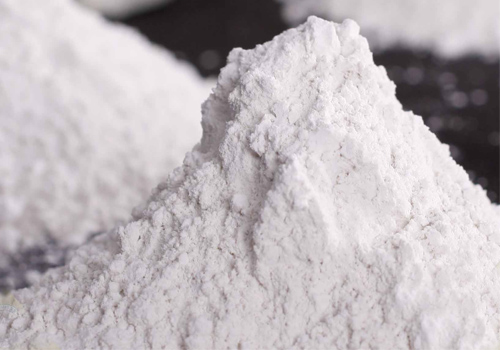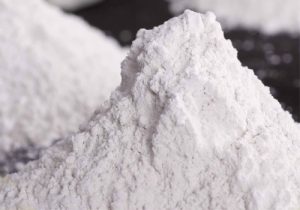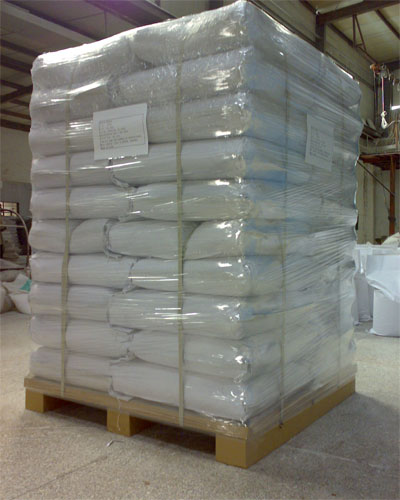What Are Organoclay?
Struggling to find the right rheology modifier for your oil-based products? Organoclay might be your solution. Organoclay are chemically modified bent
What is an organophilic clay? Organophilic clay is an organically modified bentonite that is used as a gelling agent in drilling fluids.Organophilic clay is one of many gelling agents used to control paint viscosity. Organophilic clays primary function in paints is as a viscosifier or thickener. It also contributes to increased surface tension and emulsion stability by preventing coalescence. Organophilic clay can also be used to disperse pigments that tend to settle during storage.

What is an organophilic clay? It is a bentonite that has been organically modified.
Organophilic clay is a chemically altered bentonite with unique properties that improve the performance of various industrial processes. This material has a high adsorption capacity for aromatic compounds and is ideal for landfill liners, petroleum spill cleanup, and cement-based processes. Because of its chemical properties, it is an excellent adsorbent of these chemicals and has a variety of other useful applications.
Organophilic clay is created by chemically modifying a naturally occurring mineral in a laboratory to improve its functionality as a thickener in solvent-based systems. Its one-of-a-kind property allows it to suspend pigments and stabilize emulsions while also dispersing thixotropically in a high-shear environment. Every year, organophilic clay is sold in the personal-care and cosmetics industries.
It functions as a viscosifier.
CP-150 organophilic clay is a powerful rheological additive (you can click: https://www.rheologicaladditive.com/) with excellent anti sag properties and a high yield under low-shear conditions. When used in low-shear mud plant operations, this material is an excellent rheological alternative to gelling agents. It quickly reaches its maximum viscosity.
The addition of organophilic clay can exacerbate the high PV of conventional oil-based invert emulsion fluids. Furthermore, high drilling temperatures of up to 300 degrees Fahrenheit may cause thermal degradation of the organophilic clay viscosifier. As a result, it is advised to use chemical activators to reduce the viscosity of oil-based drilling fluids. To make hydrophobic clay, organophilic clay is commonly pre-treated with long-chain fatty amines. Rheological measurements, static filtration, and plugging experiments are then used to characterize the clay.
It functions as a gelling agent.
When exposed to water, the term “organophilic clay” refers to a type of mineral that can gel. These compounds can be made from a wide range of compounds, including organic and inorganic substances. They are usually made by drying materials in an air stream to a moisture content of 5% or less.
Organophilic clay’s properties make it an excellent gelling agent for oil-based drilling fluids. It increases the cutting-carrying capacity of the fluids and aids in the stabilization of the weighting agents. It is a highly effective additive with numerous applications. While bentonite is a common drilling fluid gelling agent, other mineral materials can be substituted. This natural material’s adaptability is unrivaled.
It increases the thixotropy of drilling fluid.
Thixotropy is improved by adding CP-982 organophilic clay to drilling muds.We discovered that adding organoclay to gasoil-based drilling fluids increased the drilling fluid’s thixotropy. Increased thixotropy is a result of increased cohesive forces and interactions, which strengthen the three-dimensional structure of drilling fluids. These clay particles may be separated into flocs or aggregates during drilling.
Organophilic clays improve thixotropy by increasing the viscosity of drilling fluids while decreasing mud tackiness. This improves drilling fluid thixotropy, an important property of oilfield fluids. A drilling fluid with a low thixotropy has a low viscosity during production and a high tackiness during recovery.
It increases the thixotropy of paint.
Organophilic clay is a highly effective polymer nucleating agent, viscosifier, and stabilizer in oil-based drilling fluids, among other things. Organophilic clay’s hydrophobic chain properties and large surface area make it a versatile thixotropic agent for paint formulations. Paint manufacturers must first select the appropriate polar activator and dispersant to achieve the desired thixotropy. These two chemicals are effective in providing the organophilic clay’s thixotropic properties.
This unique organobentonite clay has rheological properties similar to Xanthan gum. but differs in chemical and structural properties. These distinctions allow for the formulation of the best additive in each case. This is especially useful in paint formulations where thixotropy is important. It is important to note, however, that the amount of organophilic clay required for paint formulations varies depending on the type of paint.
Struggling to find the right rheology modifier for your oil-based products? Organoclay might be your solution. Organoclay are chemically modified bent

Struggling to find the right rheology modifier for your oil-based products? Organoclay might be your solution. Organoclay are chemically modified bent
Organobentonite: Advanced Rheological Additive for Industrial Applications In today’s competitive industrial landscape, manufacturers are constantly
CP-2 Organobentonite for Oil drilling Mud for diesel system CP-2 Organobentonite CP-180 organoclay is an organo clay rheological additive (modified mo

+86-13185071071 (Whatsapp) paint thickener 20+ Years Experiences Strong R & D Team ISO Certification & Patents Own Raw Bentonite Ore Cooperati

+86-13185071071 (Whatsapp) thixotropic agent 20+ Years Experiences Strong R & D Team ISO Certification & Patents Own Raw Bentonite Ore Coopera



Oil based drilling muds contain organophilic clays. They act as a viscosifier and gelling agent in the drilling fluid, allowing it to carry more weight and thus improve its ability to suspend solids.
Organophilic clay is non-toxic, biodegradable, and thermally stable. They also have superior emulsification properties, allowing them to disperse oil-based drilling fluids more efficiently than clay minerals.